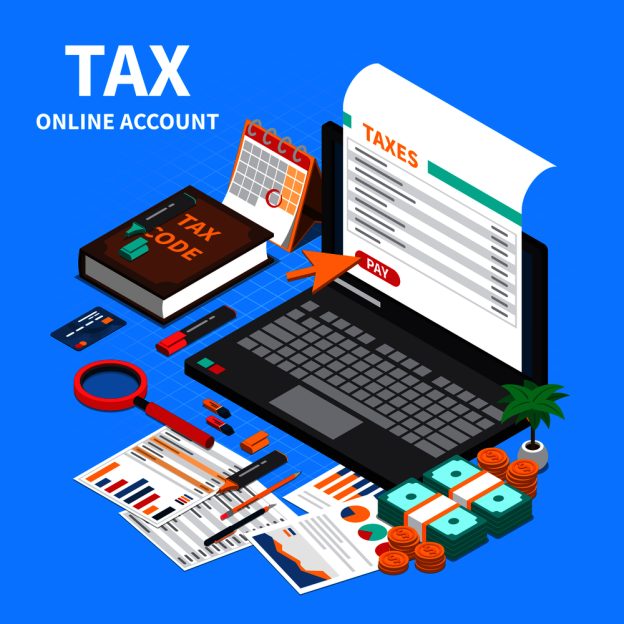
The UK’s tax system is undergoing a major digital transformation – and it’s not just for accountants and large businesses anymore.
Making Tax Digital (MTD) is HMRC’s ambitious initiative to modernise the tax system, making it more efficient, accurate, and digital-first.
The implementation of Making Tax Digital for Income Tax (ITSA) is set to commence on 6 April 2026, with approximately 780,000 self-employed persons and property owners will need to adopt MTD for income tax starting in April 2026, followed by an additional 970,000 individuals who will be included from April 2027.
HMRC are keen to make sure that those affected by MTD for ITSA are aware of their obligations so they can put plans in place and avoid penalties.
But what does that mean for you as a freelancer, landlord, small business owner, or even a casual side-hustler?
What is Making Tax Digital for ITSA?
MTD is a UK government initiative that aims to make tax administration more effective and reduce errors.
It requires individuals and businesses to keep digital records and submit tax returns to HMRC using compatible MTD software.
It started with VAT in 2019 – and it’s expanding fast with different stages of implementation mainly based on income levels.
The gradual rollout of making tax digital (MTD) for income tax is built upon the successful execution of MTD for VAT, a system that currently aids over two million businesses in minimising errors and streamlining their tax processes.
Already in effect:
- VAT-registered businesses over the £85,000 threshold (since April 2019).
- All VAT-registered businesses (since April 2022, regardless of turnover).
Coming soon:
- Self-employed & landlords with income over £50,000: from April 2026.
- Self-employed & landlords with income between £30,000 – £50,000: from April 2027.
- Self-employed & landlords with income over £20,000 from April 2028.
Qualifying income comprises total earnings from all self-employment and property prior to the subtraction of any tax deductions or expenses.
What you’ll need to comply for MTD for ITSA
- Digital Record Keeping
Spreadsheets alone won’t cut it. You must use HMRC-approved software to record income and expenses. A list of MTD compatible software that is currently recognised by HMRC can be found here via .GOV. - Quarterly Updates
Instead of one annual self assessment tax return, you’ll need to submit quarterly income updates to HMRC. - Final Declaration
One final “End of Period Statement” will confirm your total income and claimable expenses for the year.
It’s hoped that maintaining digital records consistently throughout the tax year will enable sole traders and landlords to significantly reduce the time they would typically spend compiling information during the January tax return season, boosting overall efficiency.
The main aims of quarterly updates is to spread the administrative burden of tax reporting more uniformly across the tax year, align the tax system with real-time reporting, and ultimately assisting businesses in managing their finances more effectively.
Craig Ogilvie, HMRC’s Director of Making Tax Digital, said:
“MTD for Income Tax is the most significant change to the Self Assessment regime since its introduction in 1997. It will make it easier for self-employed people and landlords to stay on top of their tax affairs and help ensure they pay the right amount of tax.”
How to Prepare for MTD in 2025
MTD is here to stay – and it’s expanding. Whether you’re a seasoned business owner or just getting started, the sooner you get familiar with digital tax systems, the smoother the transition will be.
Talk to your accountant or bookkeeper about the transition so you can be sure of your start date under MTD and that your record keeping is fully compatible with HMRC software.
- Switch to MTD-compatible software like Xero, QuickBooks, or FreeAgent.
- If you’re managing your own finances, start learning the software early.
- Consider setting up quarterly reviews of your finances to match MTD’s rhythm.
HMRC is encouraging qualifying customers to enrol in a testing programme on GOV.UK and begin their MTD for ITSA preparations before their official start date.
Benefits of MTD for ITSA (even if it feels like a headache now)
Adjusting to the making tax digital regulations may bring challenges for the self employed and landlords initially, but it is hoped that once everything is set up there will be more benefits moving forward including:
- Reduction of manual errors.
- Real-time view of your tax position.
- Helps with budgeting and avoiding surprises like an unexpected tax bill.
- Potentially less paperwork long term.
James Murray MP, Exchequer Secretary to the Treasury, said:
“MTD for Income Tax is an essential part of our plan to transform the UK’s tax system into one that supports economic growth.
By modernising how people manage their tax, we’re helping businesses work more efficiently and productively while ensuring everyone pays their fair share.
This is a crucial step in this government’s decade of national renewal and our Plan for Change, as we clear away barriers that hold back growth.”
Understanding how MTD for ITSA will impact your income after the 2025/26 tax year is crucial for all individuals with self employed and/or property income.
Knowing when you might need to adopt MTD reporting will give you ample preparation time so you can avoid costly errors in the future.







